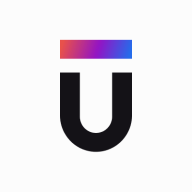


Find out in this report how the two Vulnerability Management solutions compare in terms of features, pricing, service and support, easy of deployment, and ROI.
| Product | Market Share (%) |
|---|---|
| Microsoft Defender Vulnerability Management | 2.7% |
| Zafran Security | 1.0% |
| Upwind | 1.7% |
| Other | 94.6% |


| Company Size | Count |
|---|---|
| Small Business | 8 |
| Midsize Enterprise | 2 |
| Large Enterprise | 5 |
Zafran Security integrates with existing security tools to identify and mitigate vulnerabilities effectively, proving that most critical vulnerabilities are not exploitable, optimizing threat management.
Zafran Security introduces an innovative operating model for managing security threats and vulnerabilities. By leveraging the threat exposure management platform, it pinpoints and prioritizes exploitable vulnerabilities, reducing risk through immediate remediation. This platform enhances your hybrid cloud security by normalizing vulnerability signals and integrating specific IT context data, such as CVE runtime presence and internet asset reachability, into its analysis. No longer reliant on patch windows, Zafran Security allows you to manage risks actively.
What are the key features of Zafran Security?
What benefits can users expect from Zafran Security?
In industries where security is paramount, such as finance and healthcare, Zafran Security provides invaluable protection by ensuring that only exploitable vulnerabilities are addressed. It allows entities to maintain robust security measures while allocating resources efficiently, fitting seamlessly into existing security strategies.
Microsoft Defender Vulnerability Management enables organizations to identify vulnerabilities, manage patches, and fortify threat detection. It offers endpoint assessments, cloud incident management, and dynamic security through Microsoft's Security Scorecard integration.
Organizations leverage Microsoft Defender Vulnerability Management for advanced threat detection and response. It provides robust tools for vulnerability assessment and cloud incident management, integrated with Microsoft's Security Scorecard to enhance dynamic security profiling. Key features include automatic patch deployment, security configuration management, and seamless integration with Microsoft platforms, benefiting both on-prem and cloud environments. Organizations can track vulnerabilities with severity-based reports, helping manage outdated software and minimizing threat exposure.
What are the key features of Microsoft Defender Vulnerability Management?In healthcare, Microsoft Defender Vulnerability Management helps manage compliance with health regulations, while in finance, it aids in securing sensitive data from cyber threats. Manufacturing sectors benefit from its patch management, keeping operational technology systems less vulnerable to disruptions.
Upwind is an innovative platform designed to enhance efficiency and streamline operations, offering a comprehensive set of features tailored to tech-savvy users. It supports seamless integration, ensuring that businesses can optimize their workflows with minimal disruption.
Upwind stands out by providing solutions that address complex business challenges, delivering value through enhanced functionality and ease of use. Its ability to integrate with existing systems empowers users to tailor the platform according to specific operational needs. Users benefit from Upwind's user-friendly design, which facilitates quick adoption and minimizes the learning curve. The platform's adaptability makes it a valuable tool for businesses looking to increase agility and remain competitive in a rapidly evolving market.
What are Upwind's most valuable features?Upwind is implemented across industries like finance, manufacturing, and retail, where it supports diverse operational needs such as compliance, inventory management, and customer engagement. Businesses leverage Upwind to improve data accuracy, procedural efficacy, and customer satisfaction, demonstrating its versatility and effectiveness.
We monitor all Vulnerability Management reviews to prevent fraudulent reviews and keep review quality high. We do not post reviews by company employees or direct competitors. We validate each review for authenticity via cross-reference with LinkedIn, and personal follow-up with the reviewer when necessary.